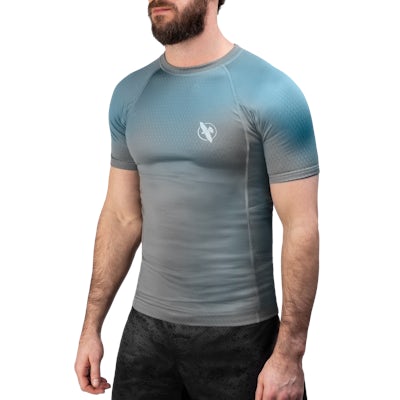Defining weight classes is a standard part of the martial arts world. They are intended to create fairness by matching competitors of similar size and weight.
In doing so, the focus is on competitor form and technique rather than their body weight and stature. Essentially, the role of weight classes balances the playing field while allowing boxing skills to shine.
Every martial arts organization has its own weight class structure including those specifically for jiu-jitsu. As a competitor, it’s important to know what to expect beforehand, and understanding the different requirements is key.
Here’s an overview of why weight classes in jiu-jitsu exist and training tips for competing.
Why Weight Classes in Jiu-Jitsu Exist
Martial arts involve discipline and structure. This applies to both everyday training and competition, which is why weight classes are such an integral part. They are important to:
Establish Fairness in Competition
Focusing on skill and technique is the core of jiu-jitsu training and competition. Weight classes ensure matches aren’t dominated by uneven physical advantages and keep the focus on a fighter’s unique ability, skills, and strength.

Promote Safety
In addition to establishing fairness, there’s a safety element associated with weight classes. Distributing matchups based on weight divisions minimizes the risk of injuries caused by mismatches in size and strength.
Level the Playing Field
Being assigned to a weight class allows competitors to refine their techniques against opponents of similar size. However, several champion fighters have won in different weight classes, highlighting their versatility and passion for the sport.
How Weight Classes in Jiu-Jitsu Competitions Work
Each organization has specific weight class requirements. Understanding the differences of each and preparing accordingly will ensure you make the weight required.
Hayabusa Ascend Lightweight Jiu Jitsu Gi

Hayabusa Fusion Short Sleeve Rash Guard

Hayabusa Pro Sauna Suit

Hayabusa Essential Gold Weave Jiu-Jitsu Gi

IBJJF Weight Classes
IBJJF weight divisions range from the lightest class, Rooster, all the way up to Ultra Heavy where there is no weight limit. As an example, here is how the featherweight Gi division is broken down by weight limit:
- Male: 154.3 lbs.
- Female: 129 lbs.
- Juvenile Male: 141.1 lbs.
- Juvenile Female: 115.7 lbs.
Participants in Gi tournaments must weigh in with their Gi and those participating in the No Gi competition should weigh in without.
ADCC Weight Divisions
ADCC is a premier No Gi competition that organizes its weight classes first by category of beginner, intermediate, advanced, or professional fighter.
It then breaks down the weights for each division with separate qualifications for those who advance to the ADCC World Championships.
Absolute Divisions
Absolute divisions, also known as open weight, allow athletes of different weight categories to compete against one another. These are some of the most exciting competitions to watch as any fighter of any size could be deemed the absolute champion.

Training Tips for Competing in Your Weight Class
Making weight is essential for fighters because there’s an automatic disqualification when they don’t. Here are some simple tips to keep in mind as you advance to the competitor level.
- Understand your optimal weight. Find the right weight class based on your body’s natural composition and training intensity. Quickly gaining or losing weight to meet a certain division’s requirements is hard on the body and unsustainable long term.
- Jiu-jitsu competition weight management. On the other hand, it’s common for fighters to cut weight leading up to a competition with the use of sauna suits. This requires avoiding extreme measures and maintaining diligence about proper hydration and nutrition.
- Work out with gear that matches your weight class. Regardless of whether you’re competing in a gi or no-gi tournament, you’ll want a jiu-jitsu uniform that feels lightweight and comfortable yet is durable and aligns with the organization’s standards.
Find Your Place Among the Great Fighters
Weight classes have always been in place to maintain accordance with jiu-jitsu competition rules, promote safety, and highlight jiu-jitsu techniques and training.
Identify your ideal weight class and focus on refining your skills to succeed in competition among the best in your division.
Hayabusa has all the gear you need for your next competition, from jiu-jitsu gis to rash guards, and more. Check out our full jiu-jitsu collection today!




